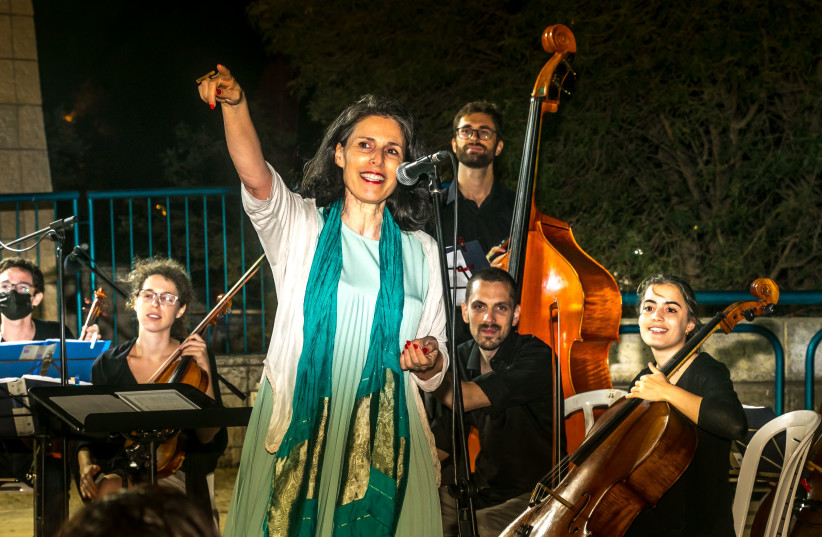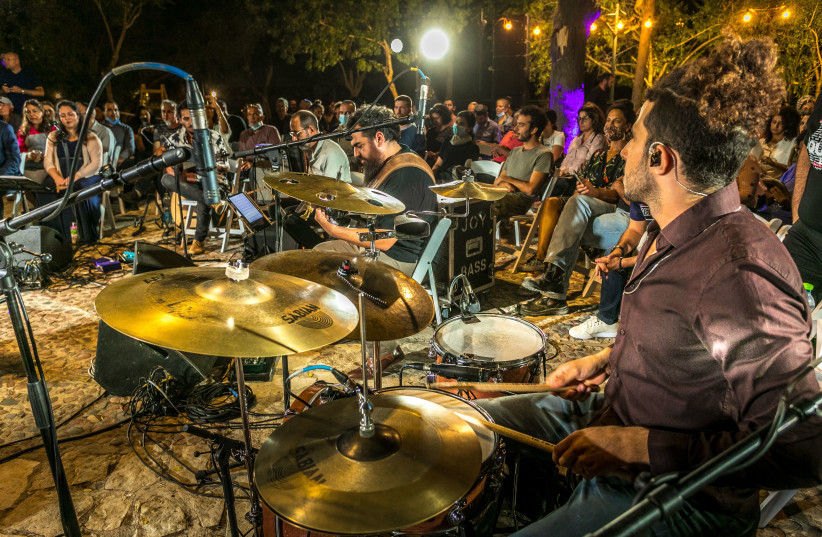“Culture is for everyone,” says Shai Doron, president of the Jerusalem Foundation. “It strengthens communities, and it also strengthens leadership.” As Israel and the rest of the world attempt to cope with the pandemic, some might put culture far down on the list of a city’s priorities. Yet, after witnessing some of the cultural events held by the foundation in recent months, it is apparent that maintaining Jerusalem’s cultural atmosphere is real, enjoyable, and necessary – especially following the year of stress and upheaval experienced by the city’s residents.
On a warm evening in late August, Shai Doron and Ruth Diskin, Director of the Projects Department, and Head of Arts and Culture at the foundation, provided this writer with an update on cultural activities, together with a foray into the field to experience a couple of events, to gain a better understanding of the foundation’s approach to communal culture.

The Jerusalem Foundation has invested more than $1.5 billion in promoting economic growth, education, dialogue, arts, culture, and heritage preservation since its inception in 1966. It is a private and independent organization that works in coordination with Jerusalem’s mayor and the municipality. “Jerusalem 2030” is the foundation’s strategic plan for the city’s future that involves three primary components – communal strength, creative culture, and leadership. One of the hallmarks of Jerusalem 2030, says Doron, is what he terms “creative culture.”
Doron emphasizes that cultural events must be made available for all of the city’s residents. “You can’t speak of a shared life in Jerusalem if culture is just for those who live in Baka, Katamon and Rehavia. We have to understand this,” he says. “Culture must be brought to the entire city – to Ein Yael, to Neveh Ya’acov, Musrara, Gilo – throughout the city.”
To that end, this summer, the Jerusalem Foundation embarked on an ambitious program of cultural events, scheduling 40 cultural events throughout the city, beginning in August, and ending in mid-October. The program, entitled SidraTarbut in Hebrew (CulturEvents, in English), is sponsored by the Jack, Joseph, and Morton Mandel Foundation and has exposed tens of thousands of Jerusalemites to subsidized cultural events across the city.
THE SERIES has included open-air concerts by the Jerusalem Street Orchestra in the San Simon Park, Gonenim; in Hamesila Park; in Khirbet Arza in Gilo, and in community gardens across the city. It has also included dance and music events in east Jerusalem, music events in the Neveh Ya’acov neighborhood adapted for the Haredi population, theatrical tours for families in the Jewish Quarter of the Old City, art events for families at the Museum on the Seam, and activities at Ein Yael, the Bloomfield Science Museum and the Gottesman Family Israel Aquarium.
Exemplifying how cultural events need to be brought to different sectors, Doron says that the very first SidraTarbut event was a Klezmer musical performance held in the haredi neighborhood of Neveh Ya’acov. Many of the performers, Doron says, were Neveh Ya’acov residents, and the event was sold out. “We empowered the community, and together with the neighborhood, we created cultural content suitable for the community.”
Doron explains that the three main components of the SidraTarbut program are bringing culture to the entire city, employing Jerusalem-based artists and suppliers for all the events, and providing cultural enrichment to the people of Jerusalem.

Staff from the Jerusalem Foundation and the Jack, Joseph, and Morton Mandel Foundation selected and developed the range of events budgeted at over NIS 1 million.
Diskin echoes Doron’s comments. “We are carrying out these projects with great cultural sensitivity toward different populations,” she says. She estimates that the Jerusalem Foundation has invested almost $27 million in its support of culture in Jerusalem over the past year, including capital building projects such as the Davidson Theater in Liberty Bell Park, and in event programming. She adds that the foundation continues to support anchor institutions such as the Jerusalem Cinematheque, Mishkenot Sha’ananim and its Jerusalem Music Center, the Museum on the Seam, the Jerusalem Khan Theatre, Yellow Submarine, the Tower of David Museum, and many others.
Emphasizing the organization’s cultural importance in the city, Diskin adds, “There is no dance, music, theater, or performance organization in the city that we are not aware of.” Another example of the foundation’s activities was its assistance in joining three cultural organizations – the Interdisciplinary Center, the Machol Shalem Dance Company, and Between Heaven and Earth – to create a new cultural center in the old Rav Chen theater in Jerusalem.
Diskin adds that the Jerusalem Foundation also plays an active role in east Jerusalem and has recently renovated the Paley Center, near the Rockefeller Museum, which is used for exhibitions, school programs, programs for children with special needs, and a summer camp.
“The cultural scene in the east of the city is also very important to us. We renovated the largest movie theater in east Jerusalem, inside the Paley Center, and the entrance plaza was turned into a gallery for Palestinian artists. Apart from the renovation, we also provide budgets for projects.”
FOLLOWING OUR meeting, we then headed into the lights of a Jerusalem evening to see and experience two cultural events firsthand. The first, held in Ein Yael in the Judean Hills on the outskirts of Jerusalem, was a pre-Rosh Hashanah musical performance of selihot by Tahrir, which brings Sephardic musical traditions to life, from Spanish piyyut traditions to contemporary Mizrahi works. Tahrir has been conducting selihot performances for more than eight years.
We arrived at Ein Yael, where a crowd of 500 Jerusalemites of all ages awaited the outdoor event. Prior to the musical performance, study groups discussed everything from the meaning and tunes of liturgical poetry, to Maimonides’ Laws of Repentance. The program then began, and the audience sat rapt in their seats as the performers sang and chanted the selihot. The uniquely Jerusalem audience was composed of both secular and observant Jews, who shared a love for the music and tradition of the selihot prayers that were performed.
Ronen Itzhaki, Artistic Consultant to SidraTarbut for the Jack, Joseph, and Morton Mandel Foundation and Managing Director of Between Heaven and Earth, who was present at the selihot event, added that “it was important that the different sectors of Jerusalem should be represented at these events. The Jack, Joseph, and Morton Mandel Foundation and the Jerusalem Foundation decided the events should be held both this year and next year. We didn’t want to wait for next year.” Itzhaki added that both foundations approached both Arab and haredi groups to produce content that would be appropriate for all.
With the expressive and prayerful sounds of the selihot echoing in our ears, we then set out for our next destination: the community center in East Talpiot, where the Jerusalem Street Orchestra was performing on the rooftop plaza of the community center, which features a neighborhood pub and bar – also established with the assistance of the Jerusalem Foundation.
The orchestra makes classical music accessible to new audiences, enriches the public arena with high-quality culture, and provides a stage for Jerusalem’s young creators and musicians. The warm Jerusalem evening had turned windy and cool, and the audience, composed primarily of local neighborhood residents, enjoyed the varied musical selections performed by the orchestra members, ranging from a Tchaikovsky waltz to music by Israeli composer Yoni Rechter.
My evening’s work concluded, I headed home with the knowledge that the cultural efforts fostered by the Jerusalem Foundation are making an impact on the city’s residents, and providing a sense of normalcy and enjoyment in these late-summer and early fall months.
The SidraTarbut events will continue in Jerusalem through mid-October.
